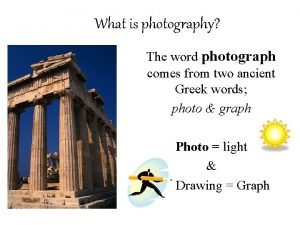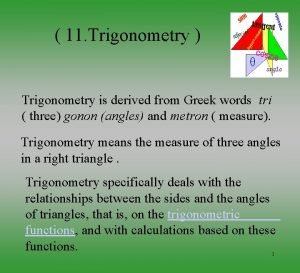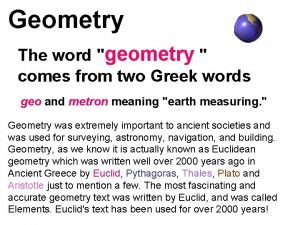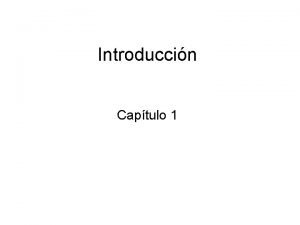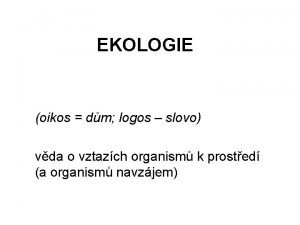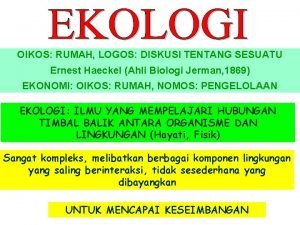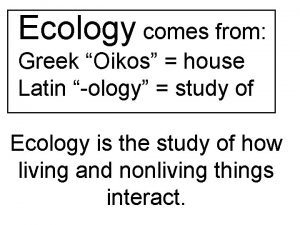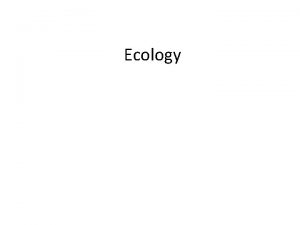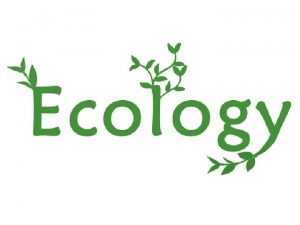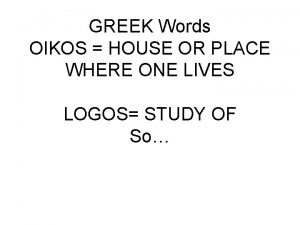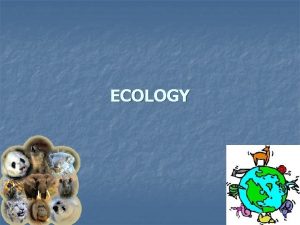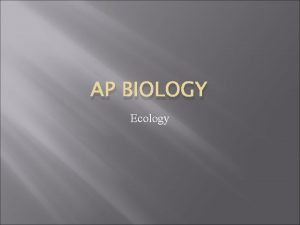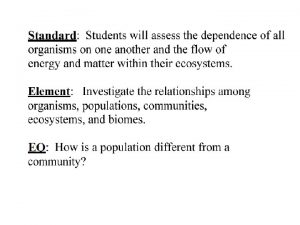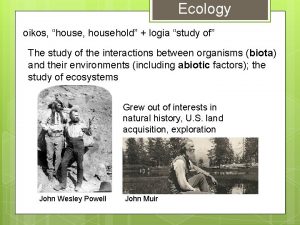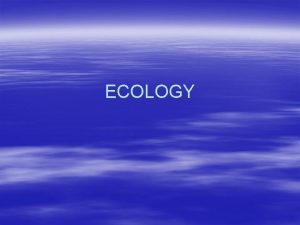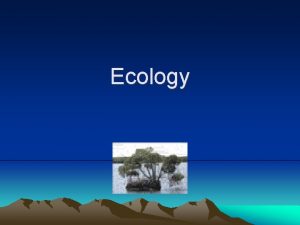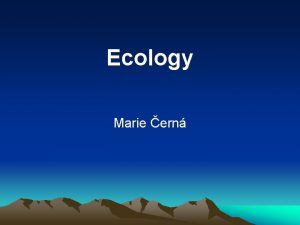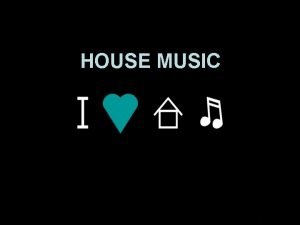Ecology comes from the GREEK Words OIKOS HOUSE
















- Slides: 16

Ecology comes from the GREEK Words: OIKOS (HOUSE OR PLACE ONE LIVES) and LOGOS (STUDY OF). Ecology can be defined more specifically a the Study of the Interactions between Organisms and their Environment.

We call the living surface of Earth the BIOSPHERE. The biosphere is composed of smaller units called ECOSYSTEMS. An ecosystem includes all organisms and nonliving environment in a place Ecosystems can be as large as we decide.

A Population includes all the members of the Same Species that Live in one place at one time. Populations are individual species, all the interacting Organisms (All The Different Populations) that live in a particular area make up a COMMUNITY. The Physical Location of a Community is called the HABITAT

A species’ Niche is its way of life, or the role the species plays in its environment. The niche includes the range of conditions that the species can tolerate, the methods by which it obtains needed resources, the number of offspring it has, its time of reproduction and all its other interaction with its environment.

BIOTIC AND ABIOTIC FACTORS 1. An Ecosystem possesses both LIVING COMPONENTS OR BIOTIC FACTORS and NONLIVING OR ABIOTIC FACTORS

FLOW OF ENERGY IN ECOSYSTEMS The MOST Important Factor Determining HOW MANY and WHAT KIND of Organisms that can live in an Ecosystem is the amount of ENERGY Available. The amount of energy an Ecosystem receives and the amount that is transferred from organism to organism has an important effect on the Ecosystem’s structure.

Energy in an Ecosystem FLOWS from the SUN to Autotrophs (Producers) then to Organisms that Eat the Autotrophs (Consumer, Herbivore) then to Organisms that feed on other Organisms (Consumers, Carnivore).

A. Decomposers – Consumers who feed on Remains of Dead Plants and Animals. B. Herbivores – Eat Producers or Plant Eaters. C. Carnivores – Eat other Consumers. Meat Eaters. D. Omnivores – Eat Both Producers and Consumers E. Detritivores – Feed on the “Garbage” of an Ecosystem.

A. Producers are the First Trophic Level. B. Herbivores are the Second Trophic Level. C. Carnivores are the Third, Forth and Fifth Trophic Levels. At each Trophic Level, the Energy stored in an organism is about 1/10 that of the Level Below it. (10%).







 Oikos artinya
Oikos artinya Polygon in greek
Polygon in greek Photography comes from the greek words photo and graph
Photography comes from the greek words photo and graph Photography greek word
Photography greek word Photography comes from the greek words photos and graphos
Photography comes from the greek words photos and graphos The word photography is greek for
The word photography is greek for Photography comes from the greek photos
Photography comes from the greek photos Trigonometry is derived from
Trigonometry is derived from The two greek words of the word geometry are geo and metro
The two greek words of the word geometry are geo and metro What would you like to say to these people?
What would you like to say to these people? First comes love then comes marriage
First comes love then comes marriage Oikos logos ecologia
Oikos logos ecologia Oikos logos
Oikos logos Oikos meaning
Oikos meaning Oikos meaning
Oikos meaning Oikos dan logos
Oikos dan logos Oikos y logos
Oikos y logos





